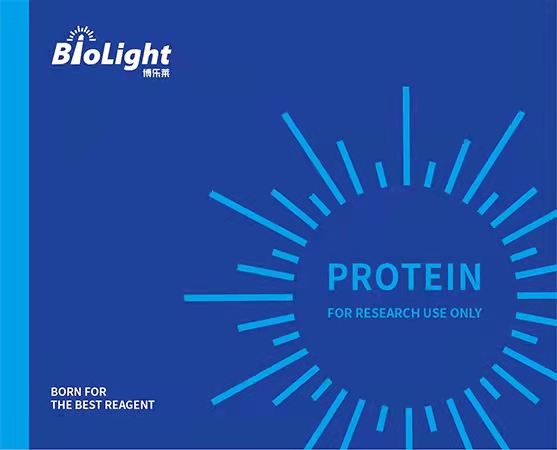
產(chǎn)品名稱:Human NECTIN2 Protein, Recombinant
純度:≥95 % as determined by SDS-PAGE
內(nèi)毒素:< 1.0 EU per μg of the protein as determined by the LAL method
生物活性:/
序列起止:Gln32~Gly360
標(biāo)簽:N-His tag
Uniprot鏈接:Q92692
表達(dá)系統(tǒng):293F
種屬:Human
預(yù)測 N 端:Met
預(yù)測分子量:/
緩沖液:20mM Tris, 250mM imidazole, 500mM NaCl, pH8.0, containing 10% glycerol.
運(yùn)輸方式:This Protein is shipped as lyophilized powder at ambient temperature. Upon receipt, store it immediately at the temperature recommended.
穩(wěn)定性 & 儲(chǔ)存條件:Avoid repeated freeze/thaw cycles. Store at 2-8°C for one month. Aliquot and store at -80°C for 12 months.
復(fù)溶:Please refer to COA for detailed information
質(zhì)量驗(yàn)證圖:/
別稱:CD112, PVRL2, HVEB, PRR2, PVRR2, Herpesvirus Entry Mediator B, Herpes virus entry mediator B
背景信息:Nectin-2/CD112. Nectins are a small family of Ca++-independent immunoglobulin (Ig)-like cell adhesion molecules (CAMs) that control cell adhesion, proliferation, and migration (1, 2, 3). The name Nectin derives from the Latin word necto, which means “to connect”. The Nectin family contains four members (Nectin-1 - 4), all of which show alternate splicing, a transmembrane (TM) region (except for Nectin-1 gamma which is secreted), and three extracellular Ig-domains. Nectins are highly homologous to the human receptor for poliovirus, and as such have been given the alternate name of poliovirus receptor-related proteins. They do not, however, appear to bind poliovirus (1). Mouse Nectin-2 is a 70 to 78 kDa type I TM glycoprotein that is found on a variety of cell types (4, 5). It has two splice forms (4, 6, 7). Nectin-2 alpha /PRR2 is a 65 kDa short form and is synthesized as a 467 amino acid precursor. It contains a 31 aa signal sequence, a 315 aa extracellular domain (ECD), a 28 aa TM segment, and a 93 aa cytoplasmic region. The ECD contains one N-terminal V-type Ig domain and two 85 - 95 aa C2-type Ig-like domains (aa 153 - 337) (8). The V-domain is believed to mediate Nectin binding to its ligands (9). A long, 78 kDa, 530 aa isoform of mouse Nectin-2 (Nectin-2δ) also exists. It has the same signal sequence and extracellular domain as Nectin-2 alpha (aa 1 - 338), but differs in the TM segment (21 aa in length) and cytoplasmic region (159 aa in length) (4, 6, 7). Mouse Nectin-2 ECD (aa 32 - 338) shares 72%, 77% and 95% aa identity with the ECD in human, canine and rat Nectin-2, respectively. Nectin-2 is known to bind pseudorabies virus, and herpes simplex virus-2 (HSV-2). It also binds select HSV-1 strains. It does not bind poliovirus (1, 10, 11). As a cell adhesion molecule, Nectin-2 will form cis-homodimers (same cell) and trans-homodimers (across cells). Nectin-2 will not cis-dimerize with other Nectins, but will trans-heterodimerize with Nectin-3 and CD266/DNAM-1 (1, 3, 11, 12, 13). Nectin-2 is found concentrated at cell-to-cell interfaces, and is presumed to contribute to tight and adherens junction formation (14). Through its interaction with NK and T cell expressed DNAM-1, it also promotes lymphocyte cytotoxicity and cytokine secretion against both tumors and dendritic cells (DC) expressing Nectin-2 (15, 16). In the case of DC, this may be a mechanism whereby the immune system eliminates DC that are inefficient at antigen presentation. Nectin-2 is expressed on epithelium, endothelial cells, Sertoli cells, monocytes, dendritic cells, granulosa cells, mast cells, eosinophils and fibroblasts.
全稱:Nectin-2 (NECTIN2)


